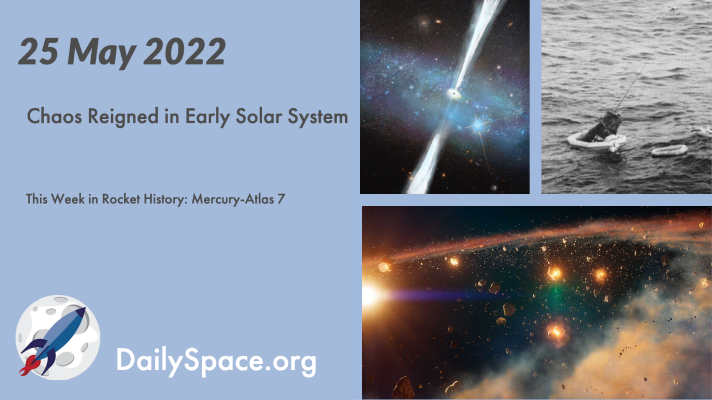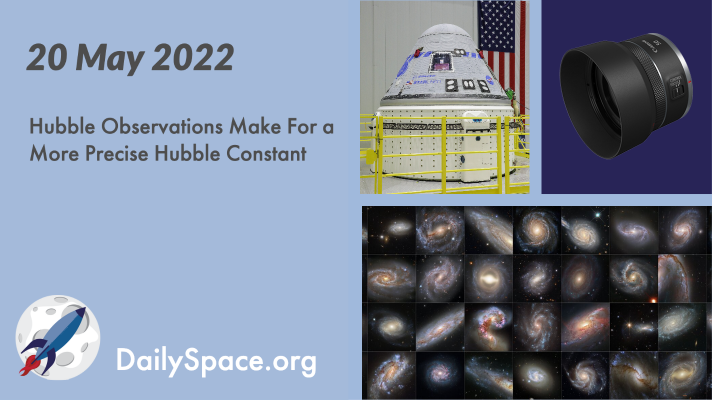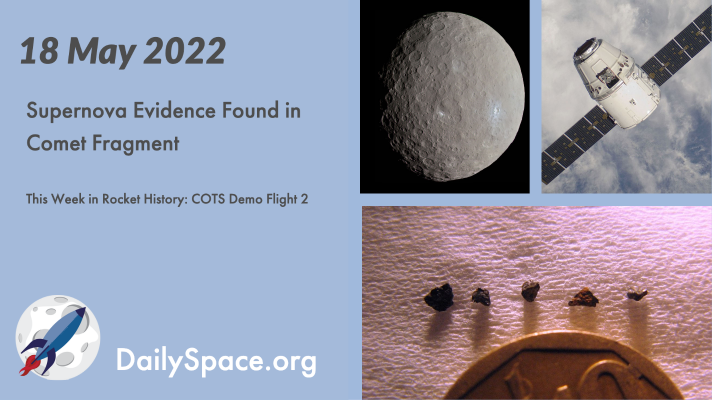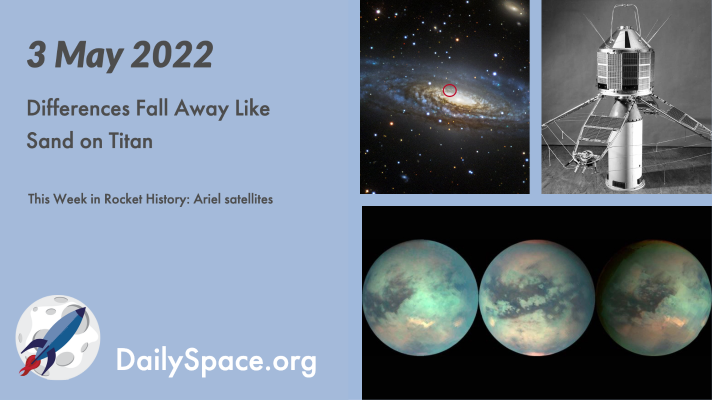
May 26, 2022 | Asteroids, Black Holes (Stellar), Crewed Space, Earth, Exoplanets, Galaxies, Our Solar System, Random Space Fact, Rockets, Space History, Spacecraft, Stars
Researchers using radioactive decay analysis have recreated the early history of some asteroids in our solar system, revealing a more chaotic phase than previously thought. Plus, a near-Earth asteroid, a trove of black holes, and this week in rocket history, we look back at Mercury-Atlas 7.

May 21, 2022 | Crewed Space, Daily Space, Galaxies, Mars, Review, Rockets, Rovers, Spacecraft, Stars, Supernovae
Over the past three decades, astronomers around the world have been using the observations of the Hubble Space Telescope to more precisely calculate the expansion of the universe. And they have converged on a precision of just over 1%. Plus, Boeing launches Starliner, Voyager 1 struggles, and Erik reviews his favorite camera lens.

May 19, 2022 | Asteroids, Comets, Daily Space, Earth, Mars, Our Solar System, Random Space Fact, Rockets, Space History, Spacecraft, SpaceX, Supernovae, The Sun
A forensic analysis of the element concentration found in the Hypatia stone finds evidence in the cometary fragment, which may have impacted Earth 28 million years ago, of a supernova origin story. Plus, Ceres, Mars, and this week in rocket history, we look back at SpaceX’s COTS Demo Flight 2.

May 18, 2022 | Astrobiology, Bennu Mapper, Daily Space, Earth, Galaxies, Guest Interview, Nebulae, Rockets, Space China, SpaceX, Starlink
A team of scientists combined stellar locations from the Gaia mission with dust and cloud maps from the WISE and 2MASS catalogs to create amazing three-dimensional images of the California Cloud and Orion A Cloud. Plus, rocket launches, the origin of carbon, and an interview with Dani DellaGiustina, principal investigator for the OSIRIS-APEX mission.

May 11, 2022 | Active Galaxies, Asteroids, Citizen Science, Daily Space, Galaxies, Guest Interview, Mars, Perseverance, Rockets, Space China, Spacecraft, SpaceX, Starlink, Supermassive Black Holes
A luminous black hole already classified as an active galactic nucleus brightened suddenly in recent ground and space observations, and the cause may be due to a sudden flip in the magnetic poles. Plus, community science, rockets, Ingenuity, and an interview with Dr. Cathy Weitz from Planetary Science Institute.

May 4, 2022 | Daily Space, Jupiter, Mars, Rocket Lab, Rockets, ROSCOSMOS, Space China, Space History, Spacecraft, SpaceX, Starlink, Supernovae, The Sun, Titan
Using spherical grains called ooids, found on Earth in shallow, tropical waters, scientists have found a possible mechanism for the formation of hydrocarbon sand on Titan. Plus, rocket launches, Jupiter and Mars, space explosions, and this week in rocket history, we look back at Britain’s Ariel satellite program.








 We record most shows live, on Twitch. Follow us today to get alerts when we go live.
We record most shows live, on Twitch. Follow us today to get alerts when we go live.